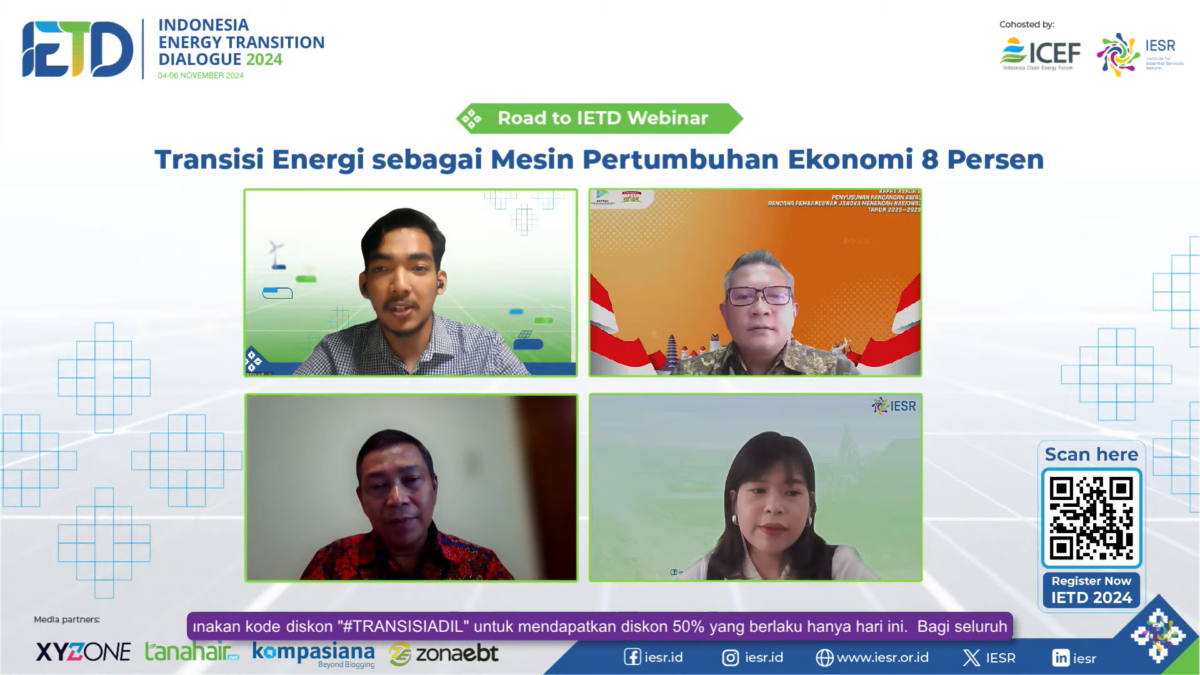Jakarta, October 10, 2024 – Indonesia will inaugurate new president Prabowo Subianto and vice president Gibran Rakabuming Raka on October 20, 2024. Prabowo’s government has a vision contained in Astacita, one of which is to achieve economic growth of 8 percent. The Institute for Essential Services Reform (IESR) believes that one of the crucial strategies to accomplish this goal is to focus on energy transition, as it can potentially drive future economic growth.
Fabby Tumiwa, Executive Director of IESR, explained that three main sectors can catalyze economic growth through energy transition. First, renewable energy investment. Indonesia has abundant renewable energy (RE) potential, such as solar, wind, and geothermal, which can attract large amounts of foreign and domestic investment. Second, the energy transition can create new jobs and improve labor skills. Third, the energy transition provides energy security and resilience by diversifying the renewable energy mix and reducing dependence on fossil fuels. According to Fabby, this is also relevant to Prabowo’s vision to reduce energy imports, especially fuel oil (BBM) and liquefied petroleum gas (LPG), which still burden Indonesia’s trade balance.
“However, the energy transition must be fair and inclusive in the process. Today, Indonesia’s most crucial development challenge is to narrow disparities between regions and social groups. Therefore, the energy transition must be enjoyed by all levels of society, including coal-producing regions that need support in their economic transformation,” said Fabby Tumiwa in the Road to Indonesia Energy Transition Dialogue (IETD) 2024 Webinar: Energy Transition as an Engine for 8 Percent Economic Growth, on Thursday (10/10/2024).
Ali Mundakir, Member of Prabowo-Gibran’s Expert Council, emphasized the importance of utilizing renewable energy to reduce dependence on energy imports and achieve energy self-sufficiency. One of the steps that can be taken with the development of smart grids that can maximize production from renewable energy sources such as solar and wind power will be a priority in the next five years.
“Smart grids will not only improve the efficiency of electricity production but will also help provide clean and affordable electricity in various regions, including rural areas. In addition, increasing electricity supply from renewable energy requires a breakthrough that is cleaner and free of carbon dioxide emissions and can be developed on a large scale at an affordable cost,” Ali said.
Meanwhile, Taufiq Hidayat Putra, Director of Electricity, Telecommunications and Informatics, Bappenas, said that transforming power generation in a greener direction is a priority to reduce carbon emissions. More advanced power generation technologies and efficient transmission networks are expected to support lower-carbon energy consumption in the future.
“However, one of the challenges must be faced is spatial mismatch, where renewable energy sources such as solar and wind are often not close to economic activity centers. To overcome this problem, developing integrated transmission infrastructure is needed,” Taufiq said.
On the other hand, Martha Jesica, Coordinator of Social, Policy, and economic research at IESR, emphasized community involvement in the energy transition process. If people feel involved and relevant in energy transition programs, the impact will be more significant and sustainable. Public participation will be key to driving the success of a just and inclusive energy transition in Indonesia.
“One of the important steps in realizing an inclusive energy transition is to plan fiscal policies that support low-carbon economic activities. This policy is expected to encourage regional economies to contribute to the energy transition and encourage community participation in economic and energy development programs around them,” Martha said.

